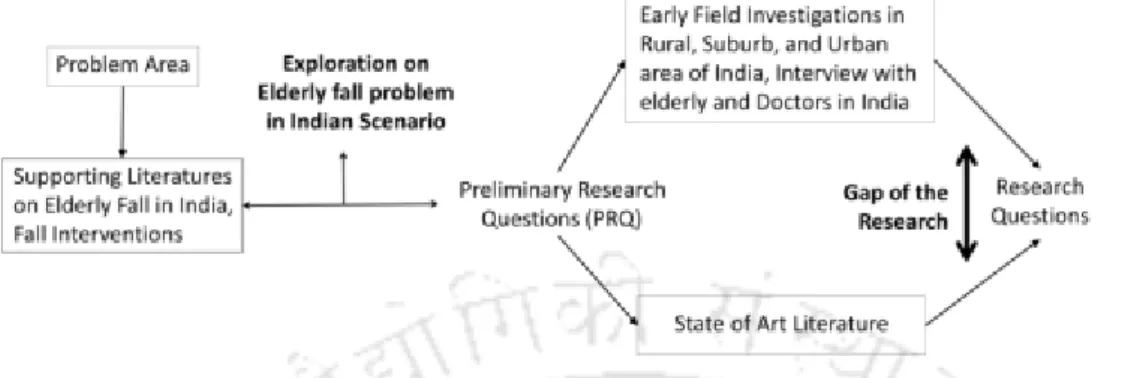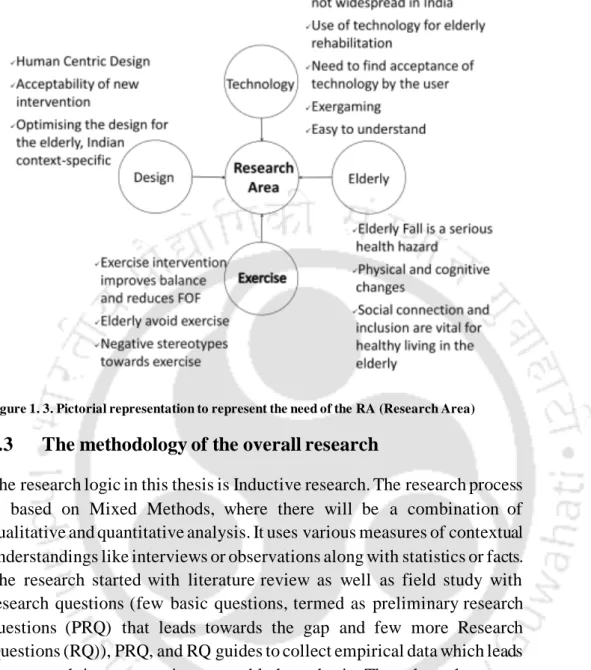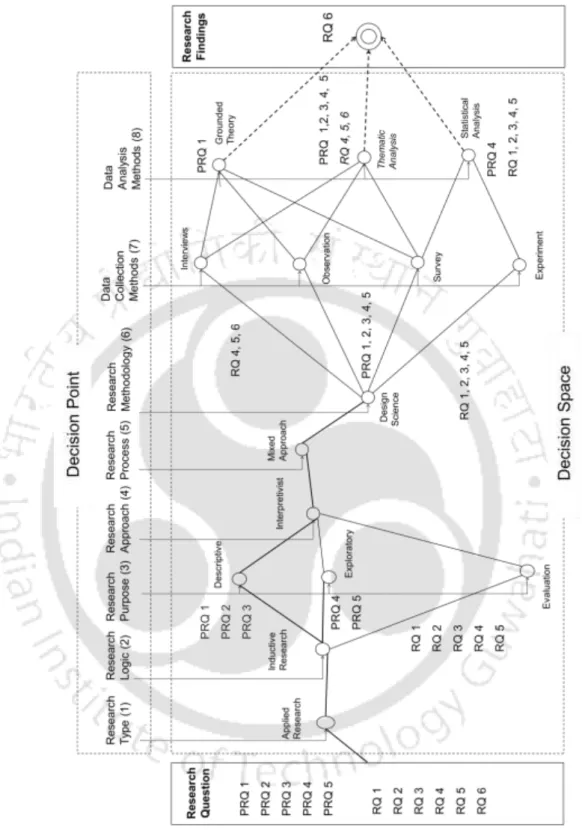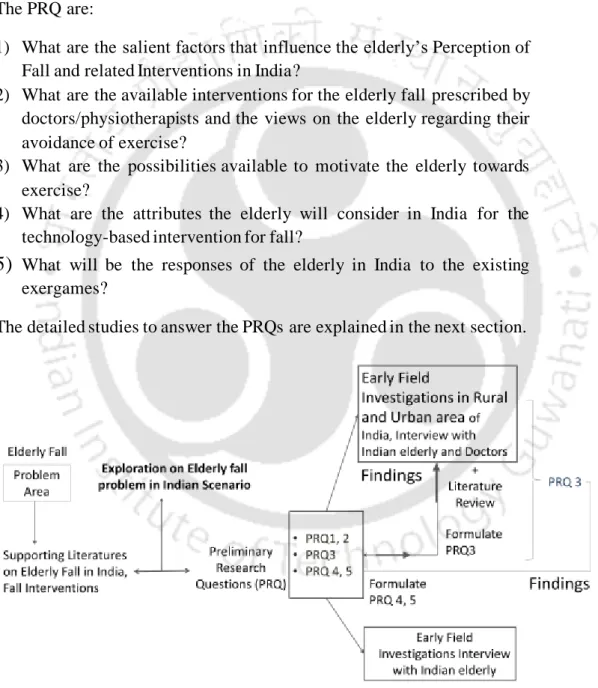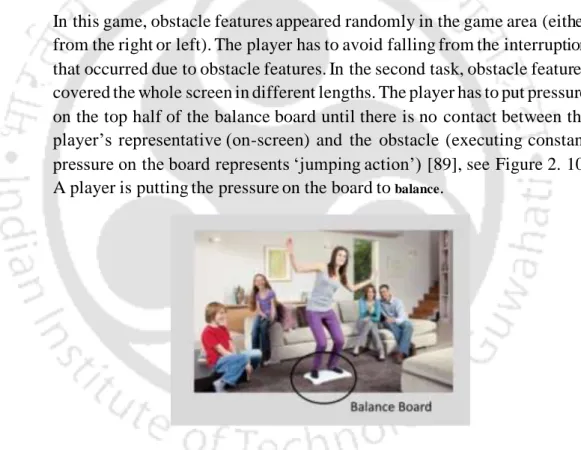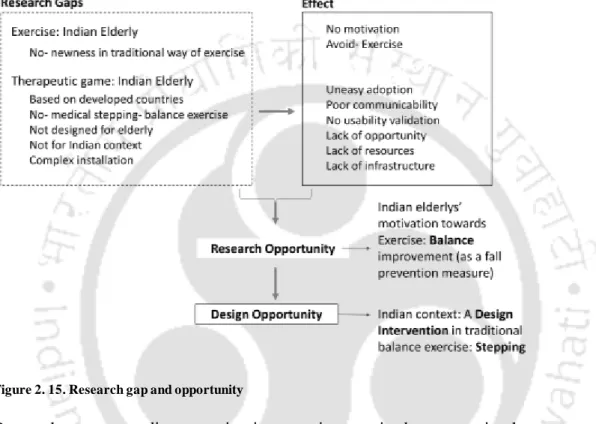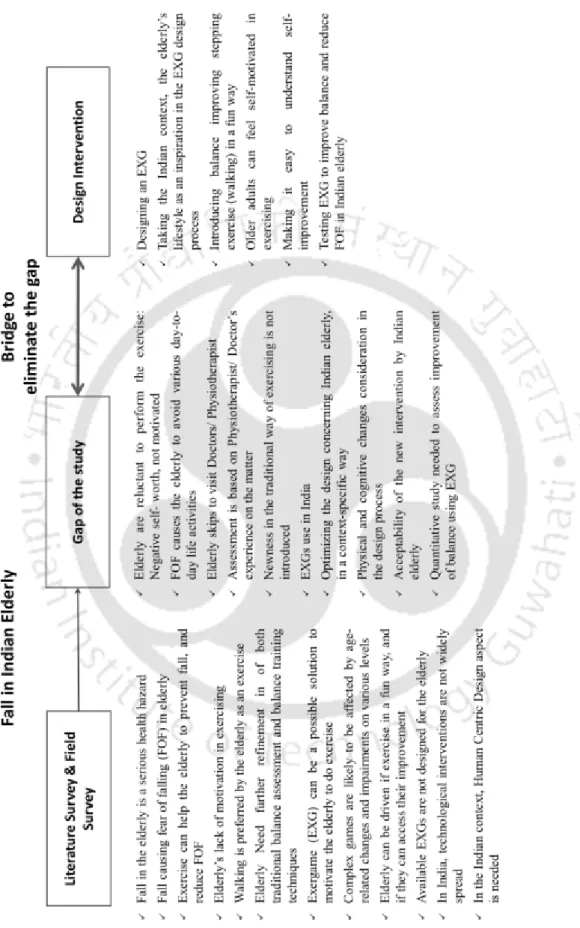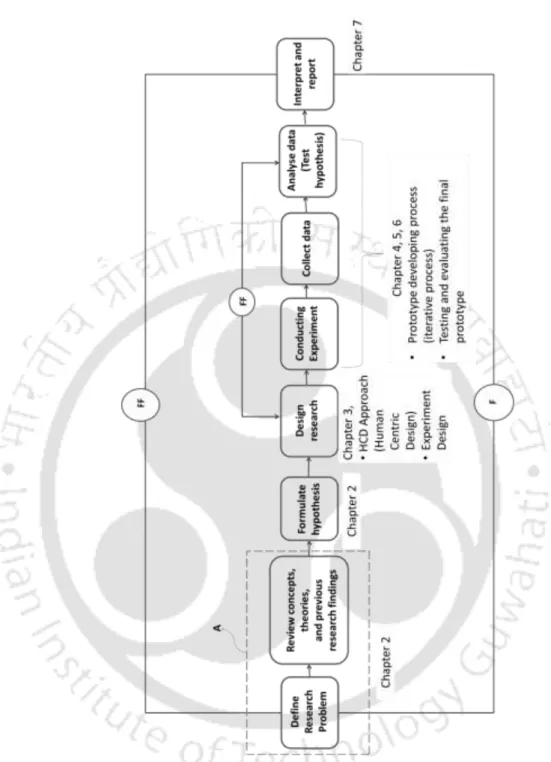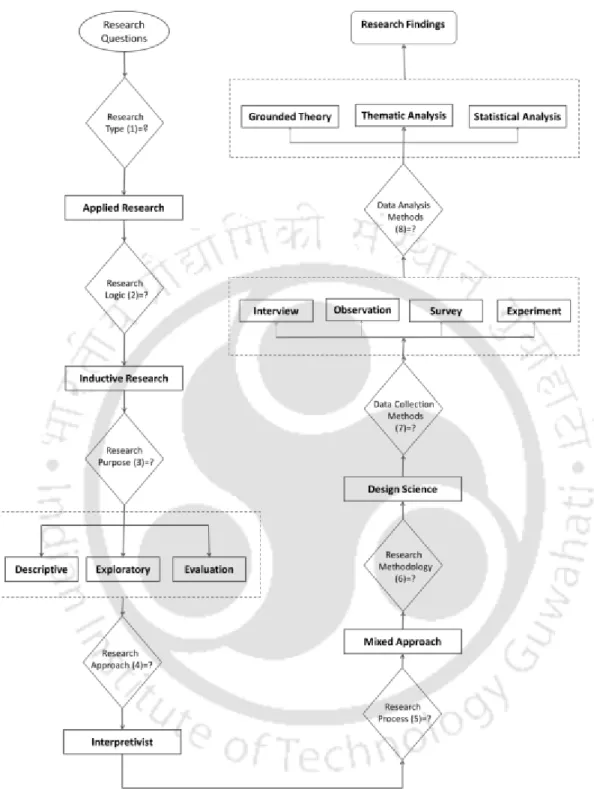The design process took into account exactly the preferences of the elderly in India, along with the walking exercises. Example of showing language selection option in the field of view of the user together with written instruction ..125 Figure 7. Example of showing visual instruction and feedback in the field of view of the user together with written instruction ..126.
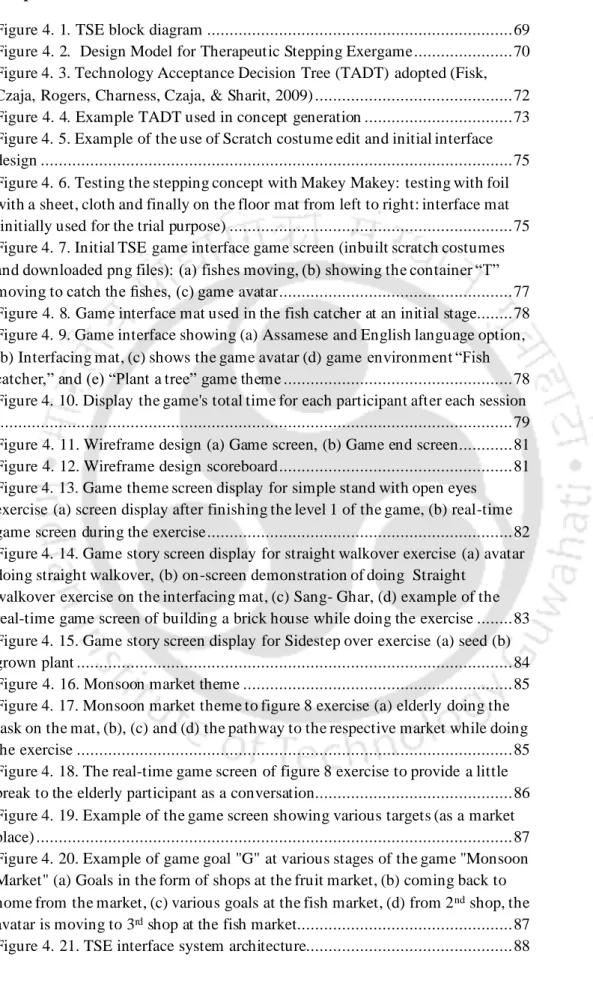
INTRODUCTION
I NTRODUCTION TO RESEARCH CONTEXT AND THESIS
M OTIVATION AND NEED FOR THIS RESEARCH
T HE METHODOLOGY OF THE OVERALL RESEARCH
T HESIS OUTLINE
STATE OF THE ART-LITERATURE REVIEW
- I NTRODUCTION
- B ACKGROUND OF THE RESEARCH
- Elderly Fall
- Fall Interventions
- The role of Fall Interventions in the Indian context
- PRQ1.: Pilot study-I
- PRQ2, 3.: Pilot study-II
- PRQ4.: Pilot study-III
- S UMMARY OF THE FINDINGS OF THE PROBLEM AREA
- E XERGAMING AS AN EXERCISE INTERVENTION
- Available Exergames (EXG)
- Studies on the available Exergames (EXG)
- T HEORETICAL D ESIGN G UIDELINES FOR ELDERLY EXERGAMES
- U SER NEEDS STUDY : U NDERSTANDING E XERGAMING AS AN
- PRQ 5.: Pilot study IV
- R ESEARCH GAP AND OPPORTUNITY
- R ESEARCH Q UESTIONS
- A IM AND O BJECTIVES
- R ESEARCH H YPOTHESIS
This is a possible scope of the fall prevention measure, which could become one of the best solutions to the fall problem in the elderly and increase the knowledge in the field of fall research in the elderly in India. Some field studies have been conducted to bridge the gap between the literature and the current scenario of elder trap in the Indian context and to re-examine the existing research gap. It describes the gaps and opportunities in research based on literature review and field research.
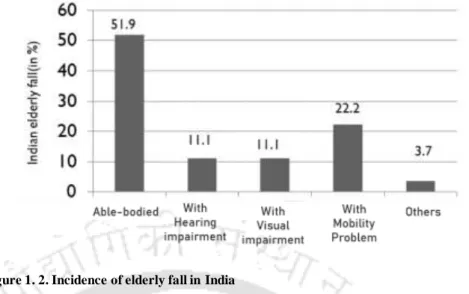
RESEARCH METHODOLOGY AND FRAMEWORK
I NTRODUCTION
R ESTATING R ESEARCH Q UESTIONS
R ESTATING R ESEARCH H YPOTHESIS
D ESIGN P ROCESS USED IN THIS THESIS
CONCEPT GENERATION, DESIGN AND PROTOTYPING
- I NTRODUCTION
- S ELECTION OF EXERCISE
- D ESIGN INTERFACE CONCEPTS SELECTION
- Technology Acceptance Decision Tree (TADT)
- Anthropometric consideration
- T HE PRIMARY WORK FOR THE P ROTOTYPING MODEL OF THE
- Prototyping formalization: Interface design
- Prototyping formalization: Game story design consideration
- Understanding the Elderly User’s need: Pilot Study V
- TSE FINAL DESIGN STAGE - NEW DESIGN CONSIDERATIONS
- Introduction
- Exercise and game story interface
- System Interface design
Initial TSE game interface game screen (embedded crab costumes and downloaded png files): (a) fish moving, (b) showing the container "T". Game interface showing (a) Assamese and English language option, (b) Interface mat, (c) showing the game avatar (d) game environment "Fish Catcher" and (e) "Plant a Tree" game theme. The real-time game screen of figure 8 is practicing to offer a little break to the elderly participant as a conversation.
DESIGN EVALUATION OF TSE FOR ELDERLY BALANCE
- I NTRODUCTION
- E XPERIMENT D ESIGN
- Variables in the study
- Procedure
- Participants and selection criteria of the study
- Y- B ALANCE T EST (YBT)
- T HE A CTIVITIES - SPECIFIC B ALANCE C ONFIDENCE (ABC) S CALE
- D ATA ANALYSIS AND H YPOTHESIS TESTING
- Study of TSE effect on the balance among the elderly in India
- TSE effect and the correlation of balance confidence and fear of
- I NTRODUCTION
- E XPERIMENT DESIGN
- UTAUT2- U NIFIED T HEORY OF A CCEPTANCE AND U SE OF
- D ATA ANALYSIS PROCEDURES
- R ESULTS AND ANALYSIS
- Inferences for newly design TSE technology acceptance
- Inferences for Behavioural Intention to use the TSE technology
- Inferences of subjective assessment
Mackey Mackey: (a) Mackey Mackey circuit, (b) Mackey Mackey connected to the laptop via the USB port. c) “Stop” and (d) feedback upon completion of the game task (after successfully completing the prescribed sets of correct practice).
DESIGN IMPLICATION AND HEURISTICS TOWARDS
I NTRODUCTION
In the field of exercise, there are some theoretical guidelines available, which were discussed in chapter 2 of the thesis. The design activities may vary depending on the state of the creative process [140], and the process must fulfill the context-specific problem. In the literature, the researchers mentioned the need for research on the actual development of EXGs and how the collected knowledge and understanding of user behavior can be transformed into design decisions when developing such EXGs [141].
The thesis attempts to outline the possibility of interweaving different fields, such as exergame, falls in the elderly and exercise interventions, into a holistic system to enrich the experience of elderly people doing balance improvement exercises. Exergame is a combination of video games and exercises [144], so from a usability aspect it should offer the user the benefit of the respective exercise and playability of the game. Based on the insights gathered from experimental research and the prototype development process reported in this dissertation, design implications and heuristics for developing an EXG based on stepping exercises for older adults are derived and outlined in the following section 7.2.
These heuristics will be useful to Human Factors Ergonomics researchers, legacy researchers, Interaction Designers, user experience (UX) and Human-Computer Interaction (HCI) researchers working on EXG in their effort to create an effective interactive tool for to develop the elderly to exercise. Further research to test and validate these heuristics can be conducted as future work for elderly EXG in the different exercise contexts.
D ESIGN H EURISTICS FOR E XERGAME IN ELDERLY
DISCUSSIONS, CONTRIBUTIONS, LIMITATIONS, AND
D ISCUSSION
It also discussed the benefits of the EXG in improving balance, improving balance confidence as well as reducing the fear of falling in the elderly in India. To assess the effectiveness of TSE in terms of balance, YBT is used, and results have shown statistically significant improvement in balance in the elderly in India. H3: The use of TSE will reduce the fear of falling in the elderly in India.
TSE reduces fear of falling in the elderly in India to a statistically significant level. Inferential statistics are used to study the acceptance rate of the elderly regarding the TSE UTAUT2. The designs are made contextually i.e. keeping in mind the real life scenario of the elderly in India.
Do not consider any model that tells the acceptance of the game among the elderly in India. The literature highlights that the available EXGs are not designed for the elderly [86, 31], and in India new technology is not accessible as in developed countries [22, 72]. Individuals with FOF and measures of quiet standing and walking have been linked to balanced confidence in older adults [21].
This research shows supporting evidence, for the study by Laufer, that EXG can improve balance in the elderly [93].
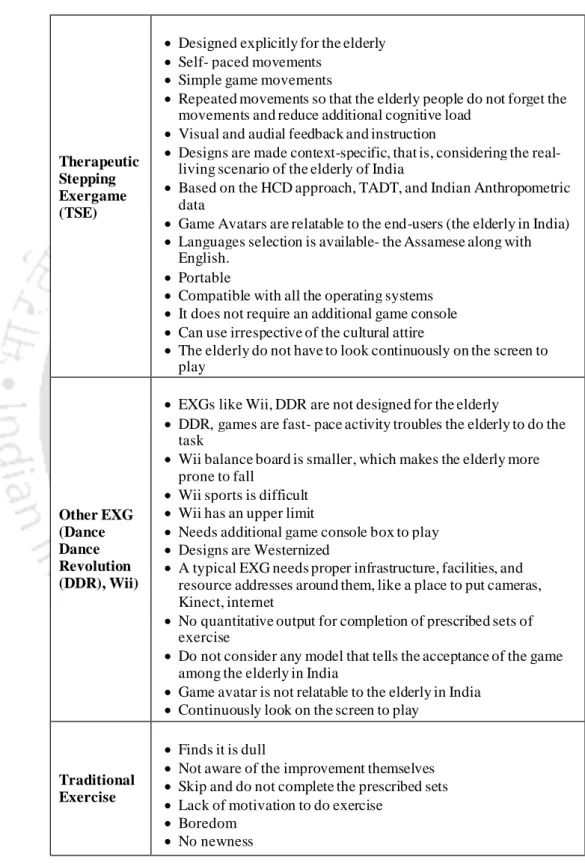
C ONTRIBUTION
This research bridges the inhibition of the elderly towards technology-based products in India without compromising their privacy while solving the fall problem. The elderly do not need to continuously look at the screen or become aware of the pace during the game session, as there are no such obligations for the user to look at the screen while playing the game or completing it. Older adults may also consider TSE home-based intervention, as many older adults may prefer exercises delivered at home with some professional guidance [7].
The TSE is a solution to improve balance in the elderly in a self-motivated manner, providing quantitative output data that can help physiotherapists/physicians view and analyze in the future, if necessary. The design heuristics from this study will provide insight into how emerging technologies – balance exercises (fall prevention) are used and explicitly designed for the elderly in India. The results show that the EXG also provides the benefits of exercise [25] in terms of balance confidence and FOF in the elderly.
The practical implications of the findings of the current research are, such as the design heuristics for designers and researchers to use EXG as a new product or tool for fall intervention in the elderly in India. The thesis offers the possibility of doing exercise by the elderly in a self-motivated way with the use of an interactive exercise tool- Therapeutic Stepping Exergame (TSE) in India. Another contribution is the design heuristics for an interactive training tool such as TSE for the elderly in India or similar cultural and social arrangements.
The main contribution is to provide a new approach in the exercise intervention system for the elderly in India to improve balance in a self-motivated manner.
L IMITATIONS
F UTURE STUDY
In the future, researchers may also conduct studies that include the effect of age variation in the UTAUT2 model for their future intention to use TSE or other EXG use. In the future, more walking exercises can be incorporated and a fully functional prototype with larger sample size, including frail and elderly with visual and auditory impairments, can be designed in different locations of India. Many participants claimed relief from back pain and thigh pain after using TSE in the current study.
The previous research indicates that EXG for the elderly also led to improvements in the perceived level of pain [149]. The design model used in the thesis (Figure 4. 2) is for TSE or may be applicable for similar EXG. Future studies may work differently in the case of people who engage in other types of physical exercise in conjunction with exercise.
This study contributes to the existing body of work on the effects of EXG as an impactful fall intervention and sheds light on the future use of EXG in the treatment of fall-related issues. In the future, EXG may include gender selection options, with an advanced technical setup (in hospitals or community hall) consisting of a facial recognition system to impersonate the user as a game avatar. It can be integrated with VR (Virtual Reality), with the appropriate measures needed with the elderly in India.
Another emerging future path is to create EXG with an exoskeleton specific for elderly users, as in the latest research for children with CP (Cerebral Palsy) such work is becoming a new rehabilitation paradigm [153].
C ONCLUSIONS
The use of TSE will reduce the fear of falling in the elderly in India. Thematic analysis with grounded theory is done in the initial phase of the research. The initial phase involves understanding the problem, that is, in this research, improving balance in the elderly in India in a self-motivated manner.
The final phase is prototype development and testing with users, i.e. the elderly population in India. The physical and cognitive aspects of the elderly population are carefully considered in the planning process. Straight walkover: In this exercise, the story of the game chosen for this exercise is "Build a House." The elderly must walk in the brown areas where the sensors are connected and walk in the areas where the sensors are not connected (as dotted in Figure 4. 14 a, b).
The stories of the games in TSE are similar to the real life of the elderly in India. The theme chosen for this exercise is gardening; the name of the game is "Plant a Tree." The user has to step sideways on the brown area and on the screen the seed will grow through various stages of growth into a plant. For the exercise "picture 8" the story of the game marketing in flood is chosen; the name is "Monsoon Market.".
TSE includes only one regional language “Assamese” along with “English”. The TSE process includes both theoretical and practical approaches. The research study described in the thesis investigates the effect of TSE on balance, balance confidence and FOF of the elderly in India. 3 shows an example of a screen display of the language selection option in TSE.
The tailored EXG will certainly be useful for the elderly in relation to the specific health benefits. To investigate the attitude of the elderly in India towards the use of fall prevention technological aids.
